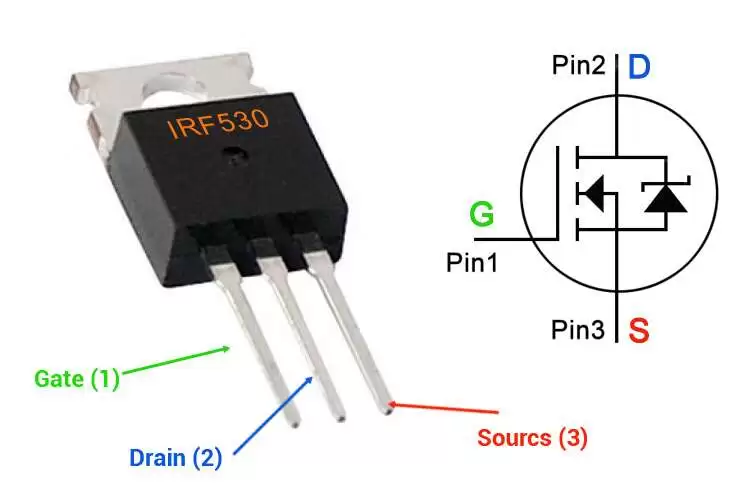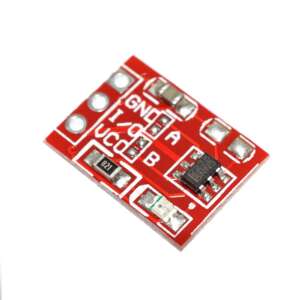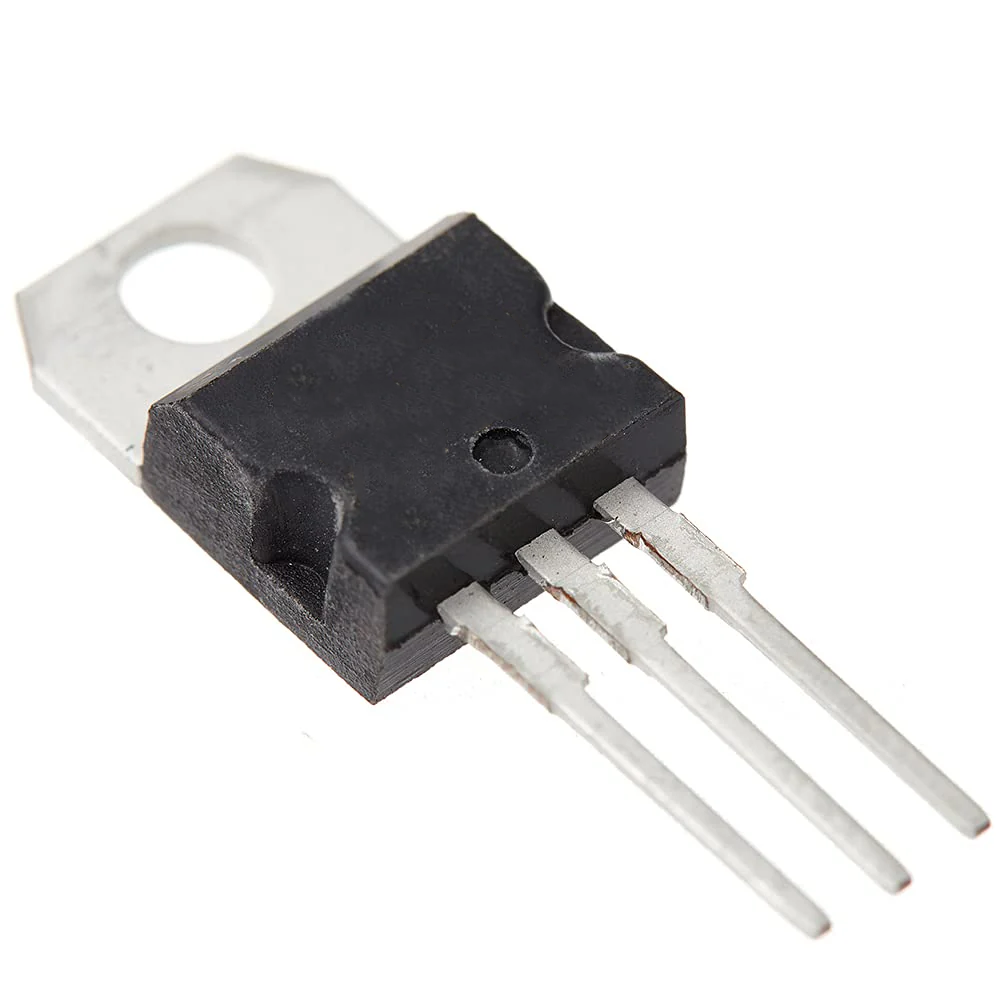IRF530 N-Channel Power MOSFET
IRF530 is an N-channel MOSFET designed for high-speed and high-power applications. It is compatible to sustain 14 A of continuous current with 100 V voltage. In pulse mode, it can drive a load up to 56 A.
The user can operate this MOSFET by the output of ICs and microcontrollers because it is designed to operate with a low gate driving current. This MOSFET can operate in the temperature range of -55˚C to +175 ˚C. It is more popular in industries due to its low cost and ruggedized design. It also features low-on-state resistance and fast switching.
For long-life performance, all components use at least 20% below their maximum limit. The maximum operating current of IRF530 is 14 A. Hence, for a better life, it must be operating around 11.2A current and load voltage below 80V.
IRF530 Pinout Description
| Pin No | Pin Name | Pin Description |
| 1 | Gate | Control the biasing of MOSFET |
| 2 | Drain | Current flows-in through Drain |
| 3 | Source | Current flows-out through Source |

Features & Specifications
- Dynamic dv/dt rating
- Fast switching
- Ease of paralleling
- Required simple drive circuit
- Repetitive avalanche rated
- Maximum Drain-to-source voltage VDS: 100V
- Maximum continuous drain current ID: 14A
- Pulse drain current: 56A
- Maximum power dissipation: 88W
- Maximum gate-to-source voltage: ±20V
- Peak diode recovery dv/dt: 5.5V/ns
- On-state resistance: 0.16Ω
- Total gate charge Qg: 26nC
- Operating junction and storage temperature range: -55˚C to +175˚C
- Package: TO-220
- Transistor Polarity: N-channel
Switching Characteristics
- Turn-on delay time td(on): 10ns
- Rise time tr: 34ns
- Turn-off delay time td(off): 23ns
- Fall time tf: 24ns
Working of IRF530 N-channel MOSFET
Here we will use IRF530 to run a DC motor. In this circuit diagram, a variable resistance is used to control the speed of the DC motor. A DC motor is connected between the drain and source terminals of IRF530. This simulation is done in proteus. With help of variable resistance, we can set the resistance between gate to drain.
The speed of the motor is proportional to the current that passes through the motor (the drain-to-source current or drain current passes through the motor). As the resistance increases, drain current and speed decrease. Similarly, as the resistance decreases, drain current increases and speed also increases.
Applications
- Battery management system and battery chargers
- Motor drives
- Solar power supply applications
- UPS
- DC-DC and DC-AC Converters
- Regulators
- Audio amplifier
- Solenoid and relay drivers




